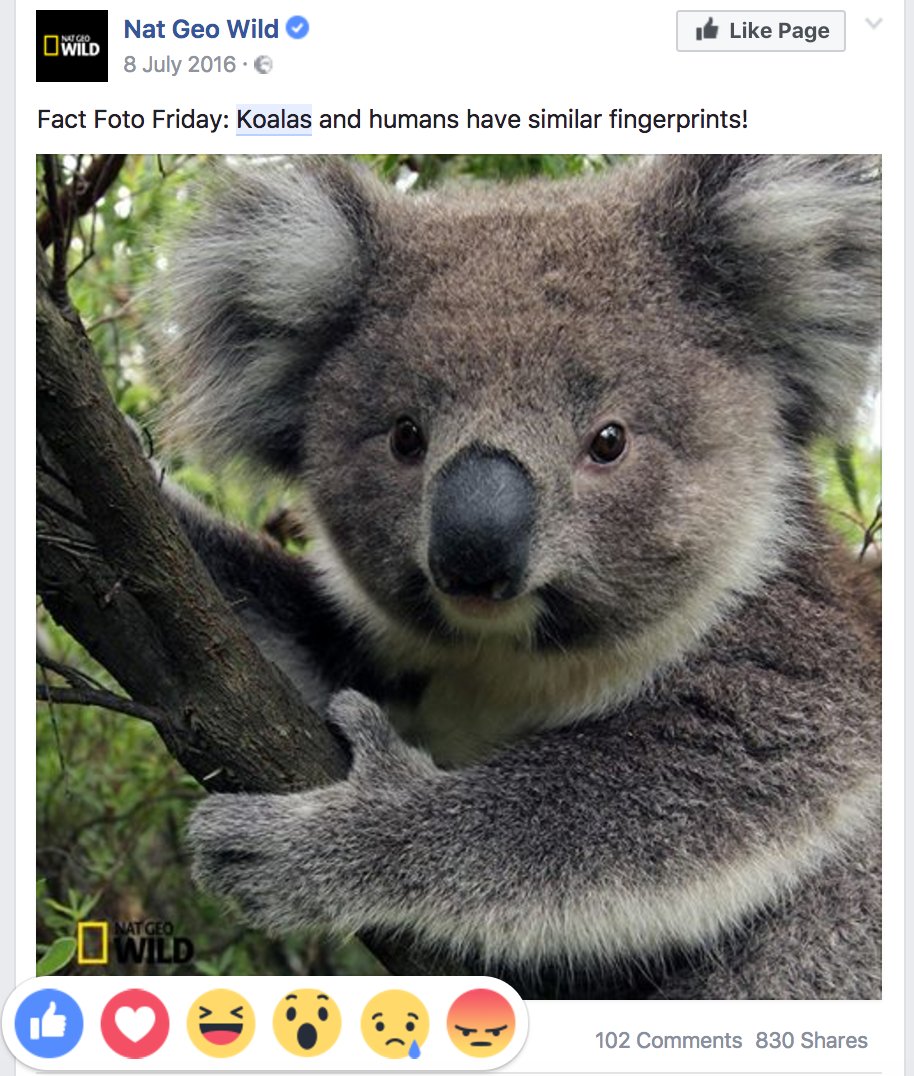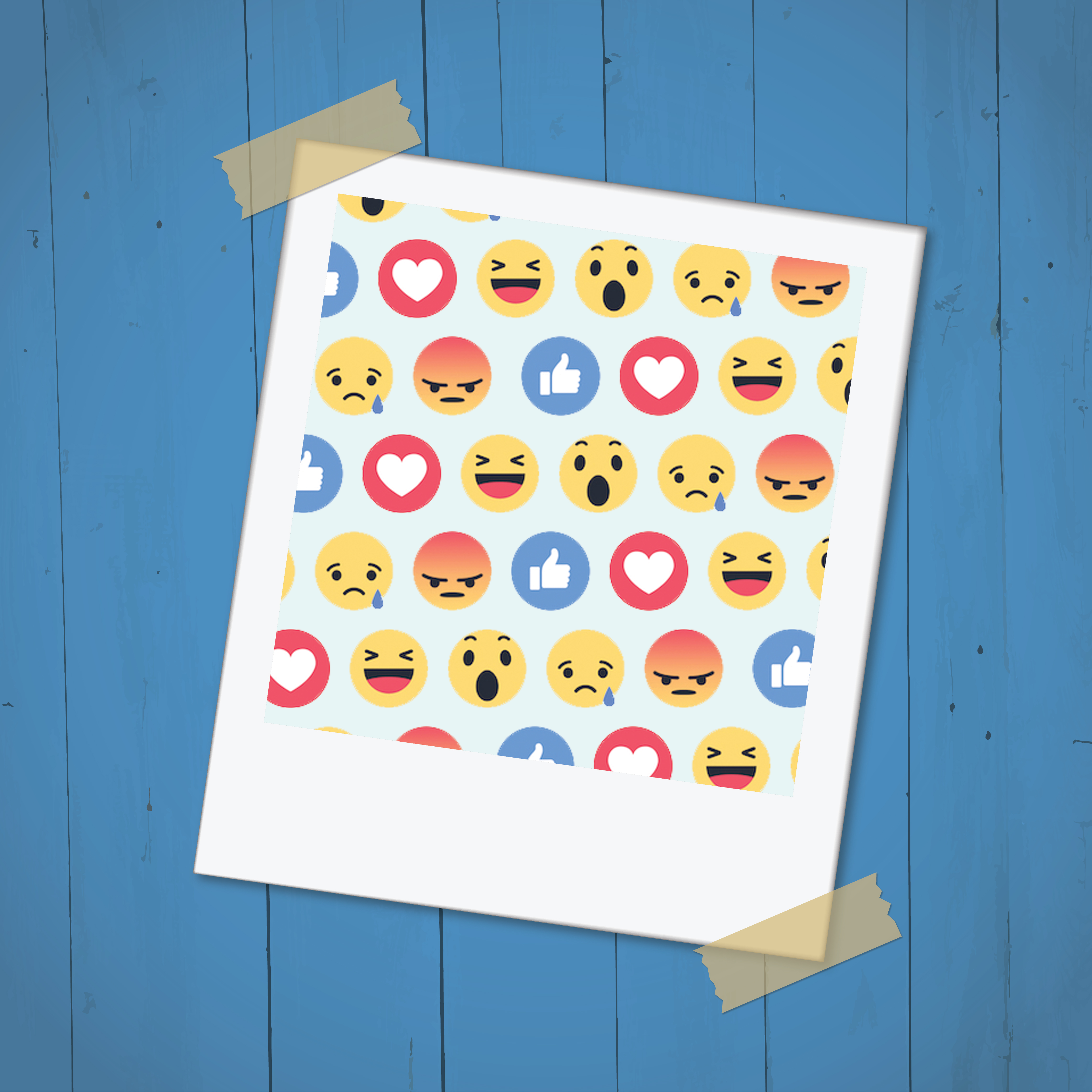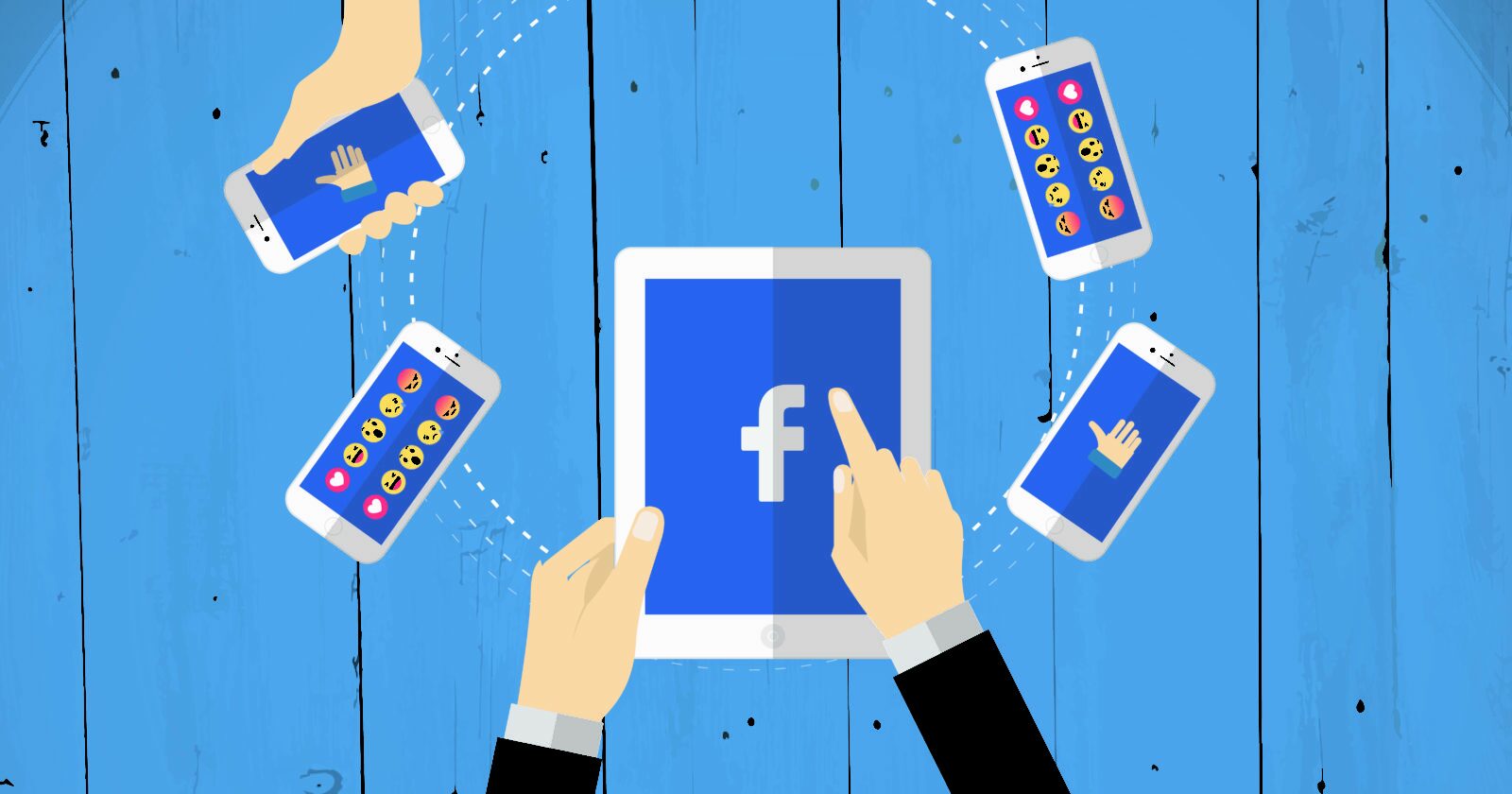Just over a year ago, Facebook released Reactions. Five new emojis joined the venerable Like button – Love, Haha, Wow, Sad, and Angry – with the aim of giving users a little more freedom to express their emotional responses to posts.

These cutesy characters gave material manifestation to an important truth about Facebook: the social network is powered by emotions. So this was a fitting upgrade.
The new Reactions were used more than 300 billion times in their first year. In fact, the humble Like has now taken a back seat to the other Reactions. According to Facebook, Reactions are a “stronger signal” of engagement with a post.
Facebook uses these signals from Reactions to shape our News Feeds. We can infer from this that more Reactions means greater visibility.
You have a new tool at your disposal to increase your reach and, more importantly, the level of affinity your customers feel toward your brand. You also have a year’s worth of data, which means you can shape your social media strategies from a position of strength.
Here’s a summary of what we’ve learned so far, as well as some practical tips to help you get the most out of Reactions and increase brand affinity.
For Every Action, A Reaction
If our strategy is simply to improve our reach by using Reactions, then we’ve already put the cart before the horse.
The clue is in the name; Reactions require stimuli. We need to begin with an analysis of what type of content will evoke the response we’re looking for.
Fortunately, a lot of great research has already been done on this topic.
A fascinating study (Measuring Emotional Contagion in Social Media), published in late 2015 by a team of French and Italian researchers, found that Twitter users engaged with content in very different ways, depending on their emotional state.
The research centered on the propensity of users to engage with content that was either positive, negative, or neutral in nature. This engagement could take the form of a comment or a retweet, for example, but they also assessed the sentiment in users’ tweets.
Users were segmented into two groups: low and high susceptibility to emotional contagion, meaning they were typically either unlikely or likely to demonstrate an overt reaction to content in their feed.

The results are clear: “the low- and high-susceptibility groups are, respectively, 1.6 times and 3.96 times more likely to adopt positive emotions, with respect to negative ones.” On Twitter, people are much more likely to share, and be affected by, positive content.
Now let’s apply this theory to Facebook Reactions.
Facebook substantiated these findings (albeit indirectly) by revealing that over half of those 300 billion Reactions were engagements using the Love emoji. This makes a lot of sense, intuitively.
People use social media to keep up to date with friends, to discover content, and increasingly to make purchases. It stands to reason that, within such a context, we’re more likely to share content we love than content that angers or saddens us.
So how do we create posts people will love?

You Can’t Hurry Love
If your goal is to create content – and a brand – people love, it’s going to take time.
Your creative must be poignant enough to make your audience stop and care.
This applies equally to publishers and retailers. In the case of the latter, the onus is on ensuring that the initial emotive engagement marries up to a smooth transaction journey.
In the case of the former, a Reaction is meaningless if it doesn’t lead to genuine engagement with the content behind the post. As such, Reactions are just part of a measurement strategy that also includes bounce rates, video views, and click-through rates, among a myriad of other metrics.
The importance of posting at the right time can’t be understated either. People go to Facebook when something newsworthy is happening. At these times, hasty content production is essential for attracting a reaction.
Content that provokes an Angry or Sad reaction (news of a terror attack, for example) will require contextualization on Facebook’s part, too.

A reductive reading of the above may lead us to think that we should only post content that we know people will love, as this will give us a boost in News Feed coverage. However, if this is just a disingenuous attempt to trick Facebook into giving us more air time, it will be doomed to failure.
It is worth pausing to reflect on this for a moment. Comments are still a vital factor in Facebook’s News Feed algorithm. In fact, they are still suspected to outweigh Reactions, as it takes more active engagement from a user to respond than to react.
Therefore, it’s worth considering if some of those less popular Reactions (e.g., Wow and Sad) are a better fit for your brand’s content, especially as they may go hand-in-hand with more comments. There is a lot of value in sparking debate with posts rather than just going for cheap Loves.
8 Tips To Increase Brand Affinity
This topic lends itself to a lot of theorizing. We still haven’t cracked emotion measurement, and we’re still some distance from doing so. That provides fertile ground for research and conjecture.
However, there are some practical tips we can all take on board today to help us attract an emotional response that will increase brand affinity:
- To boost engagement rates, consider using polls on Facebook, with Reactions representing a vote for one of the options. Spotify Australia used this mechanism to great effect recently.
- Use reactive content to tap into trending topics. This will get your content in front of people at a time when they are most likely to have an emotional response.
- Plan ahead. Create content to capitalize on times when you’re likely to attract higher Reaction rates. The highest engagement rates seen so far were on Christmas Day 2016, so there is a lot of value in preparing for big events or holidays.
- Videos receive 60 percent more engagement than images. Although more time consuming to produce, videos are an essential content asset in 2017. News channel WBRC 6 used live video in an innovative fashion earlier this year to attract Reactions and comments during the presidential inauguration.
- Controversial posts can attract significant engagement (both positive and negative). Just use this tactic with caution.
- People are much more likely to engage with positive posts, but it has to be content that either evokes a strong emotion within us or will make us look good by sharing it. Otherwise, it will be ignored.
- Consider Reactions a part of your strategy, as a naturally occurring byproduct of a strong content strategy. Asking for Reactions from an audience will quickly wear thin.
- Reactions provide invaluable, instantaneous feedback. Gather this data, analyze it, and learn from it.
Looking Ahead
Nothing much has really changed for marketers. Our job is to engage an audience. That means forging emotional connections.
What we have now, thanks to Facebook Reactions, is a stronger indication of what works and what doesn’t, for which we should be grateful.

For Facebook advertisers, it seems only a matter of time before emotional targeting becomes an option. This would allow brands to set a specific Reaction as a campaign KPI, for example. We could target users who have Loved similar products to ours in the past or even target those who have selected Angry on posts by our competitors.
As an extension of this, brands that routinely attract a positive reaction may see a reduction in their CPM, as Reactions are indicative of popular, high-quality posts that resonate with Facebook’s users.
This still feels like a stop-gap measure, however. Facebook could roll out more sophisticated emotion-based targeting in the future. For now, what we know for sure is that attracting Reactions will improve our reach in Facebook’s News Feed.
Achieving this requires a thoughtful, comprehensive content strategy, something that piques the audience’s interest and stands out from the crowd — hopefully for positive reasons.
Get those actions right, and the Reactions will follow.
Image Credits
Featured image and in-article image from Chelsea Herbert
Screenshots taken by Clark Boyd, April 2017
Bar chart via Measuring Emotional Contagion in Social Media





